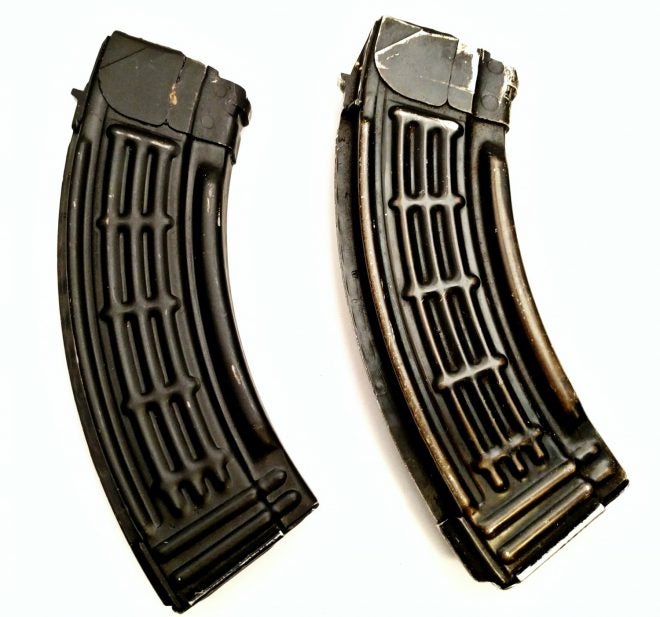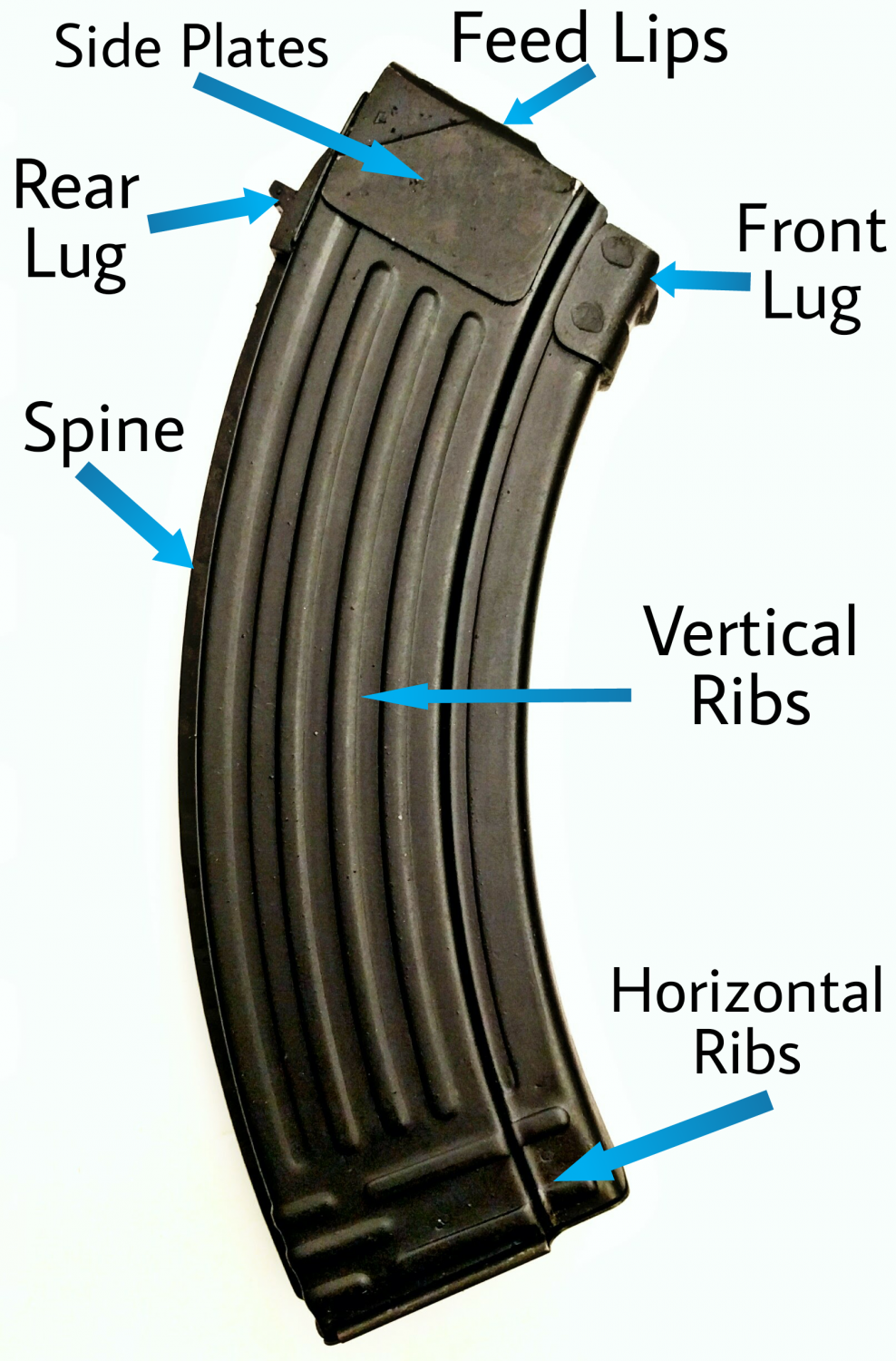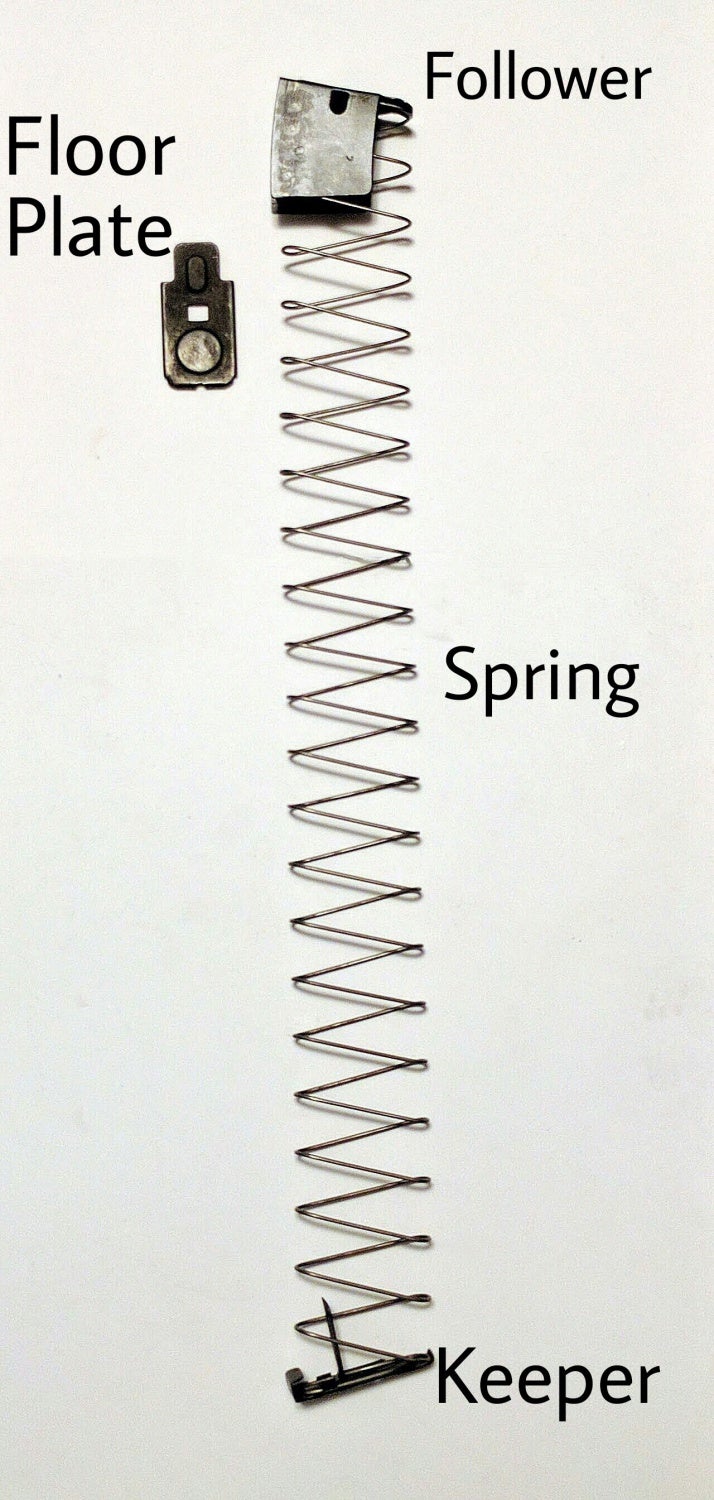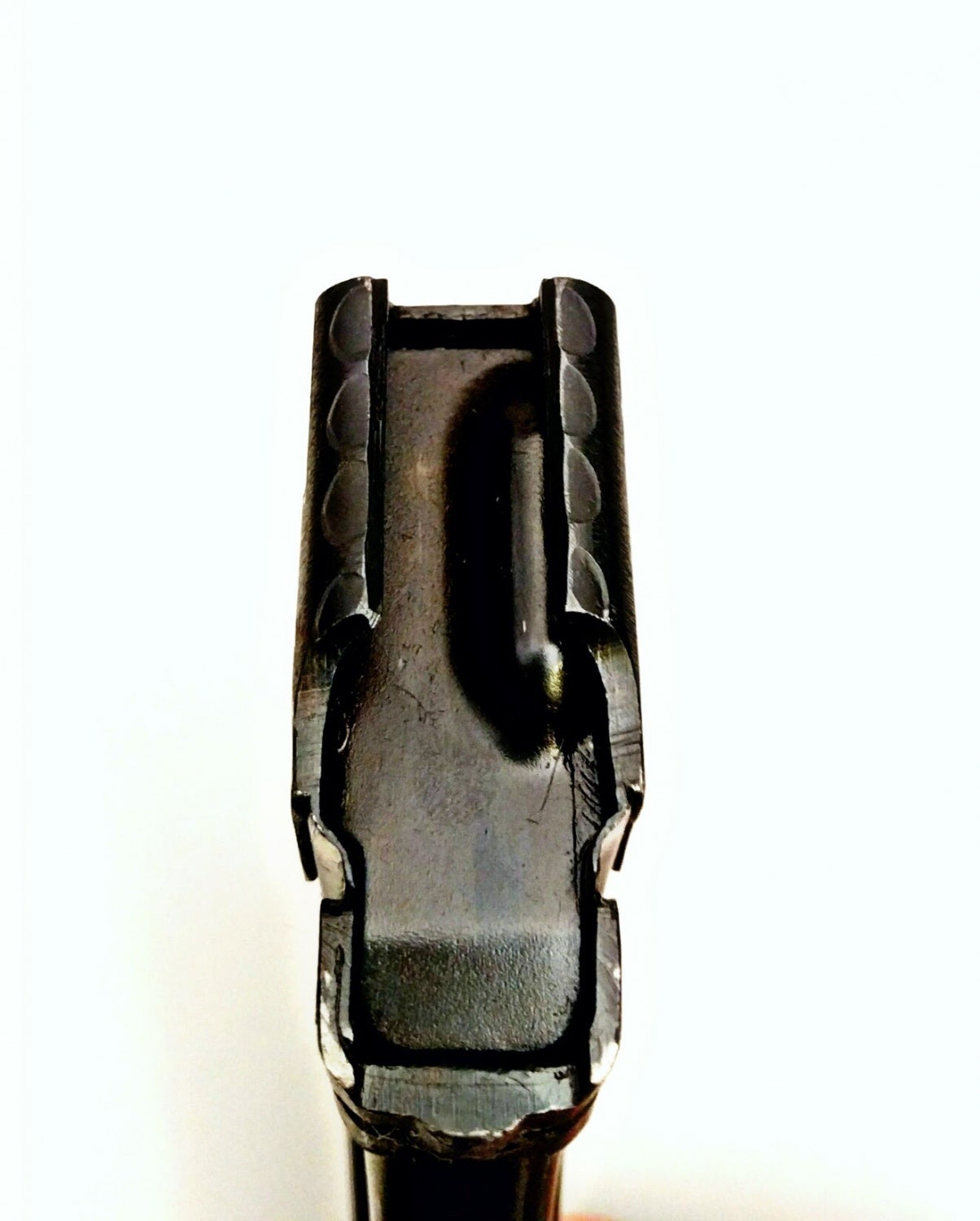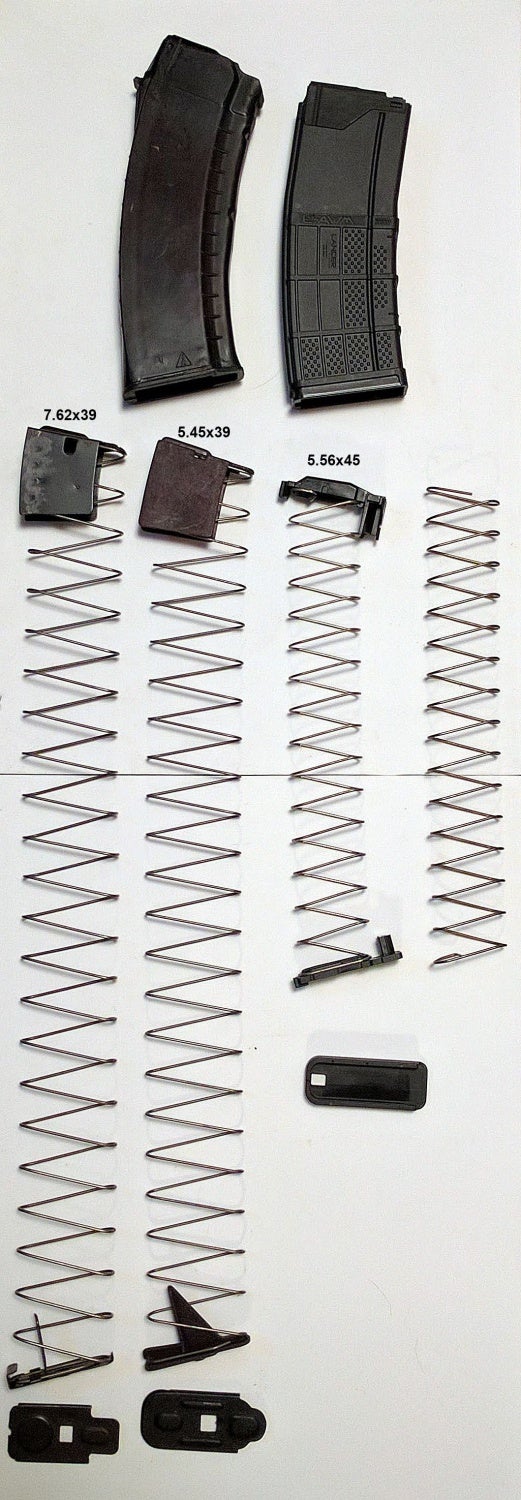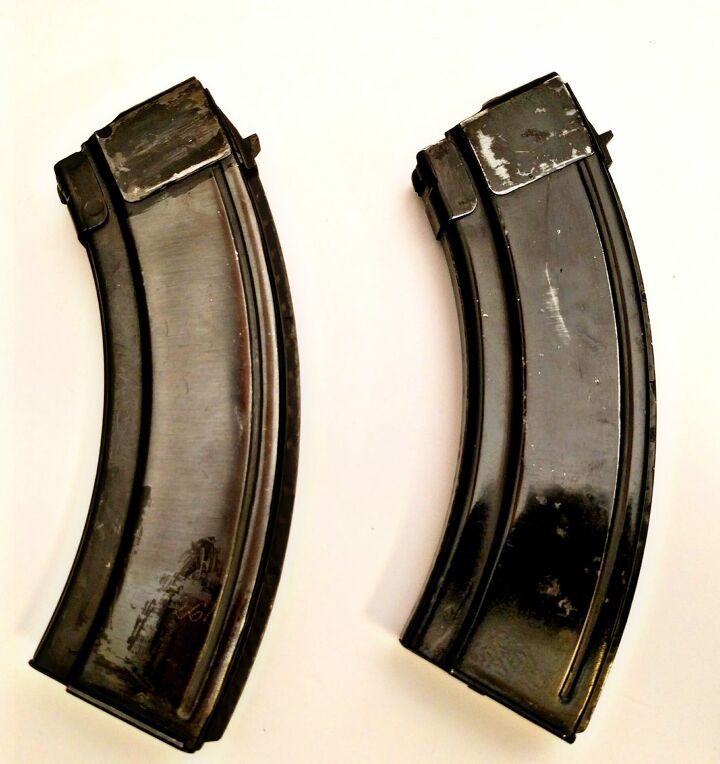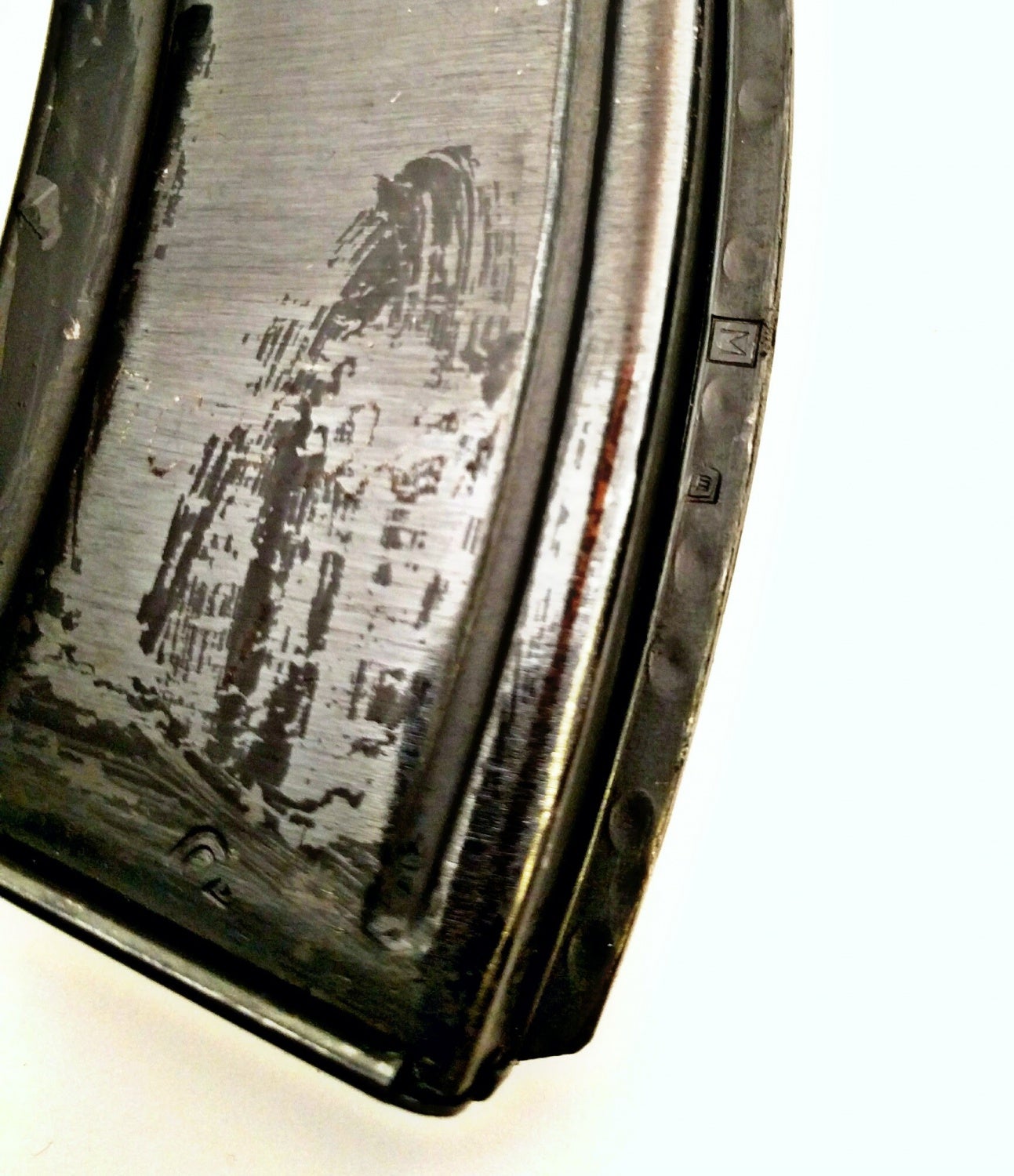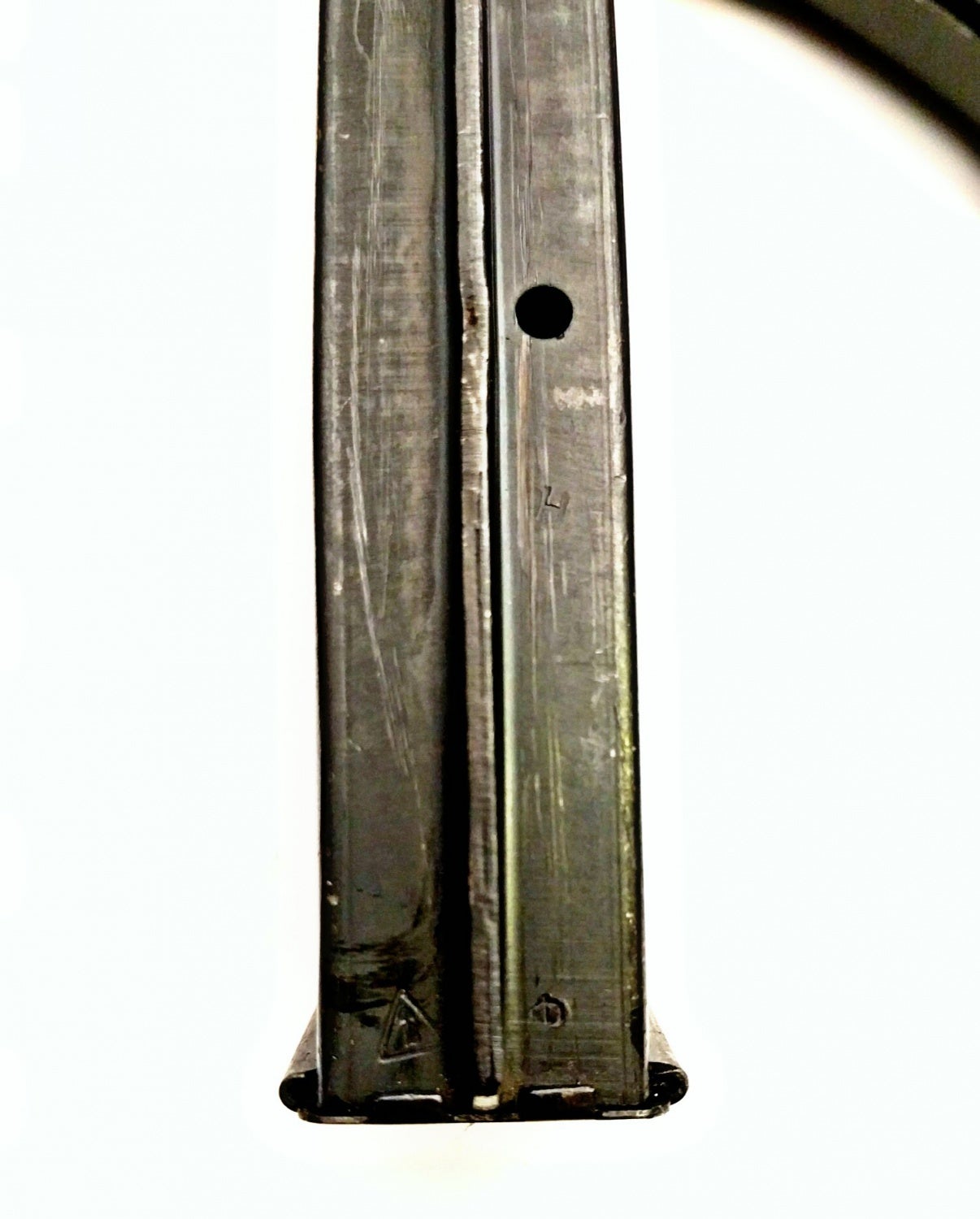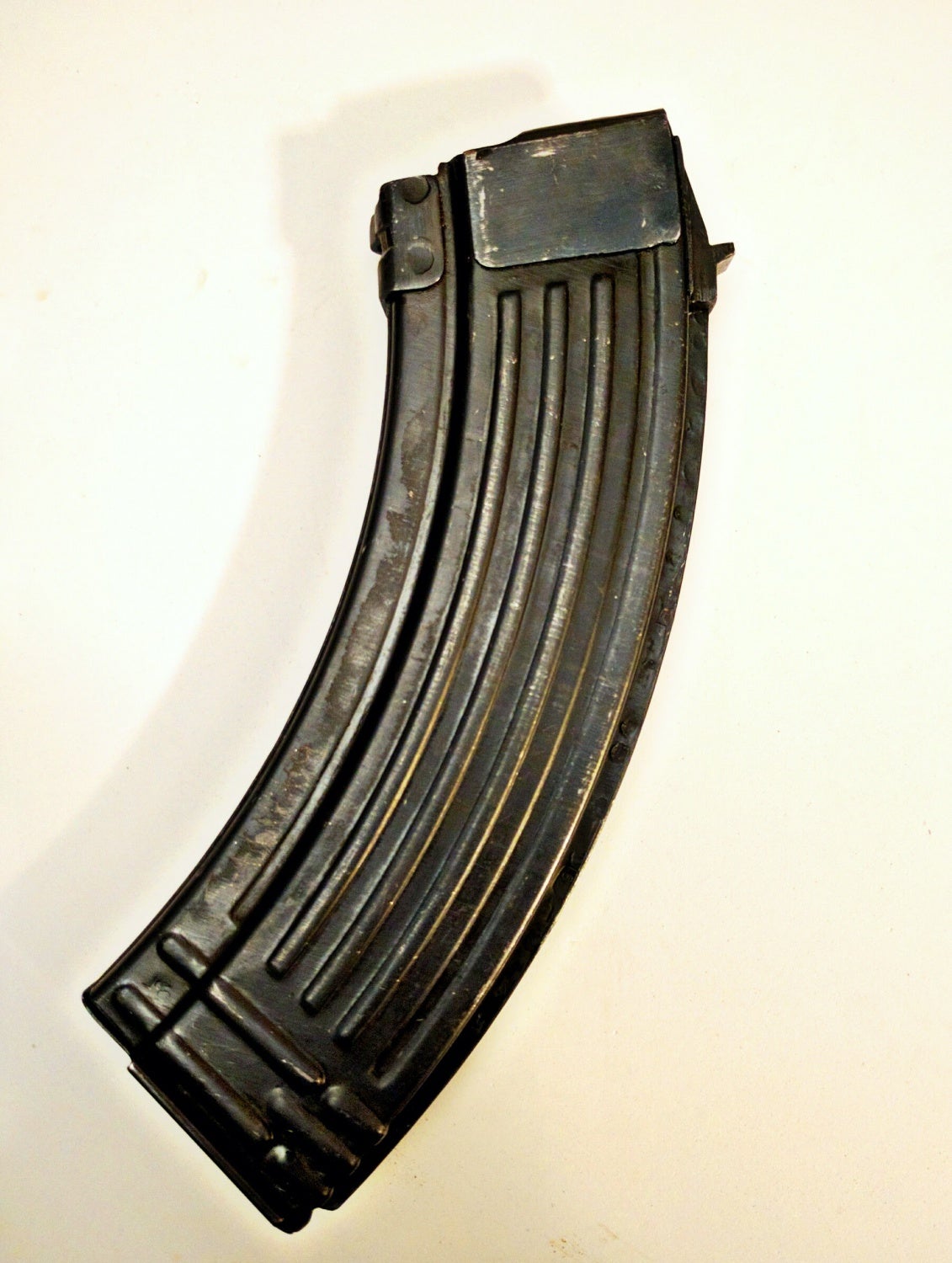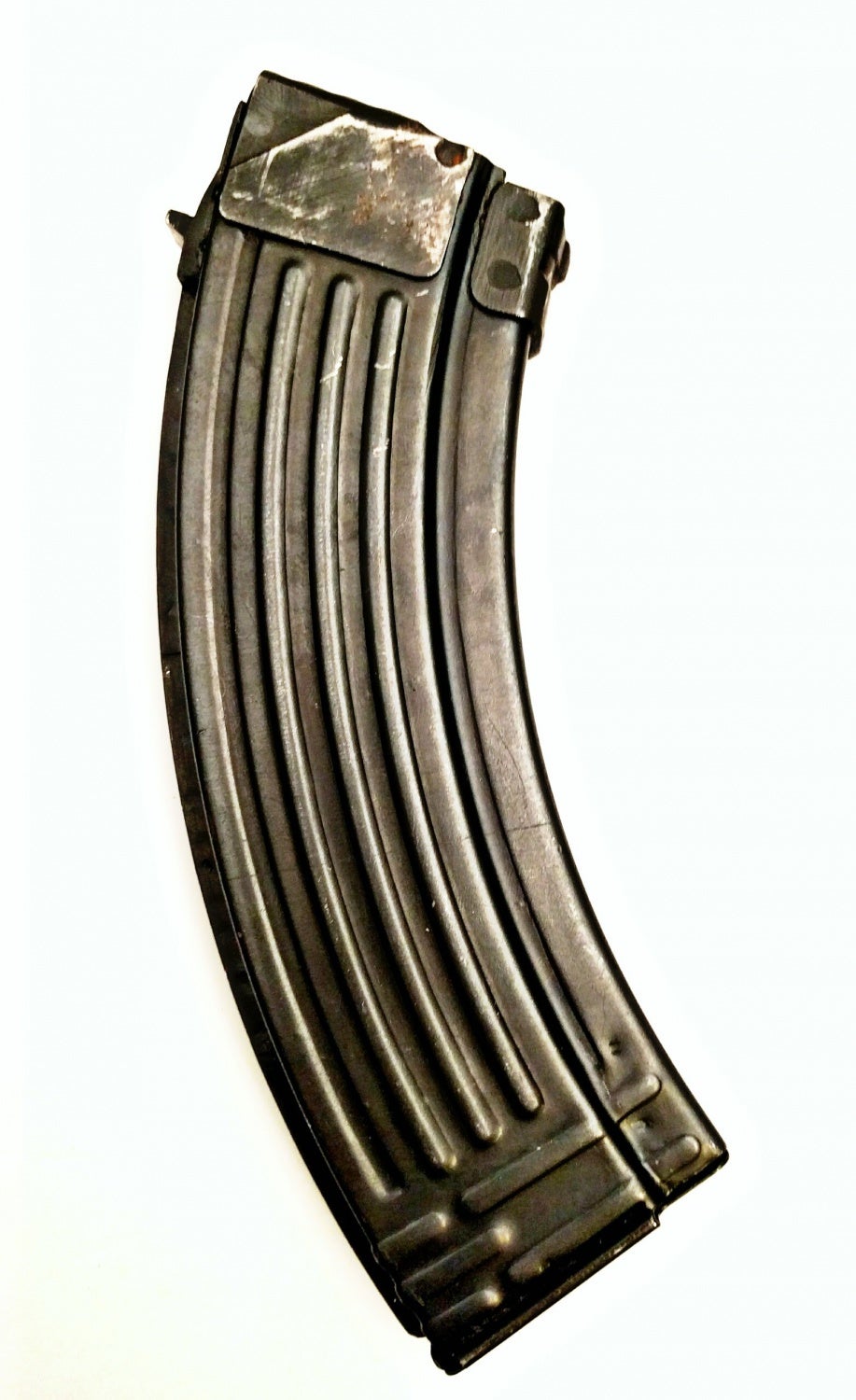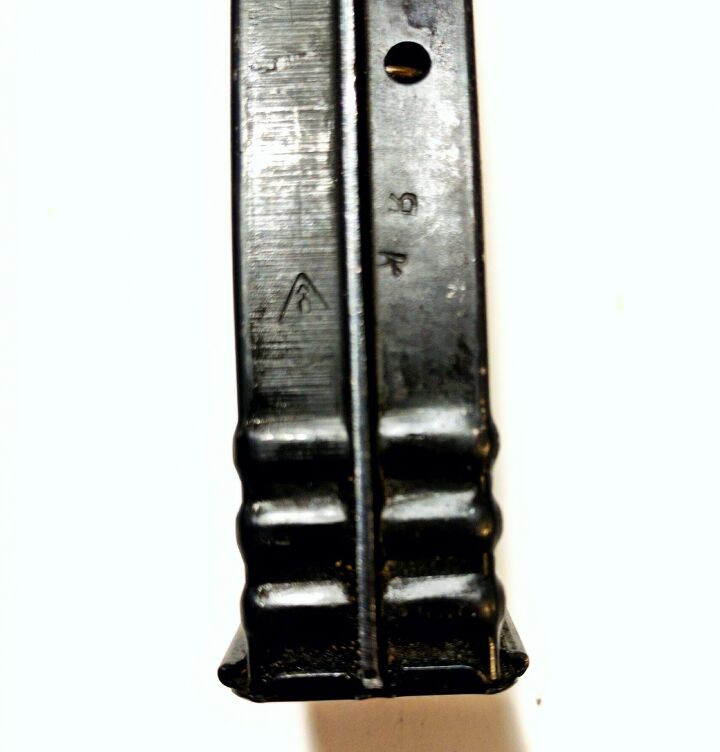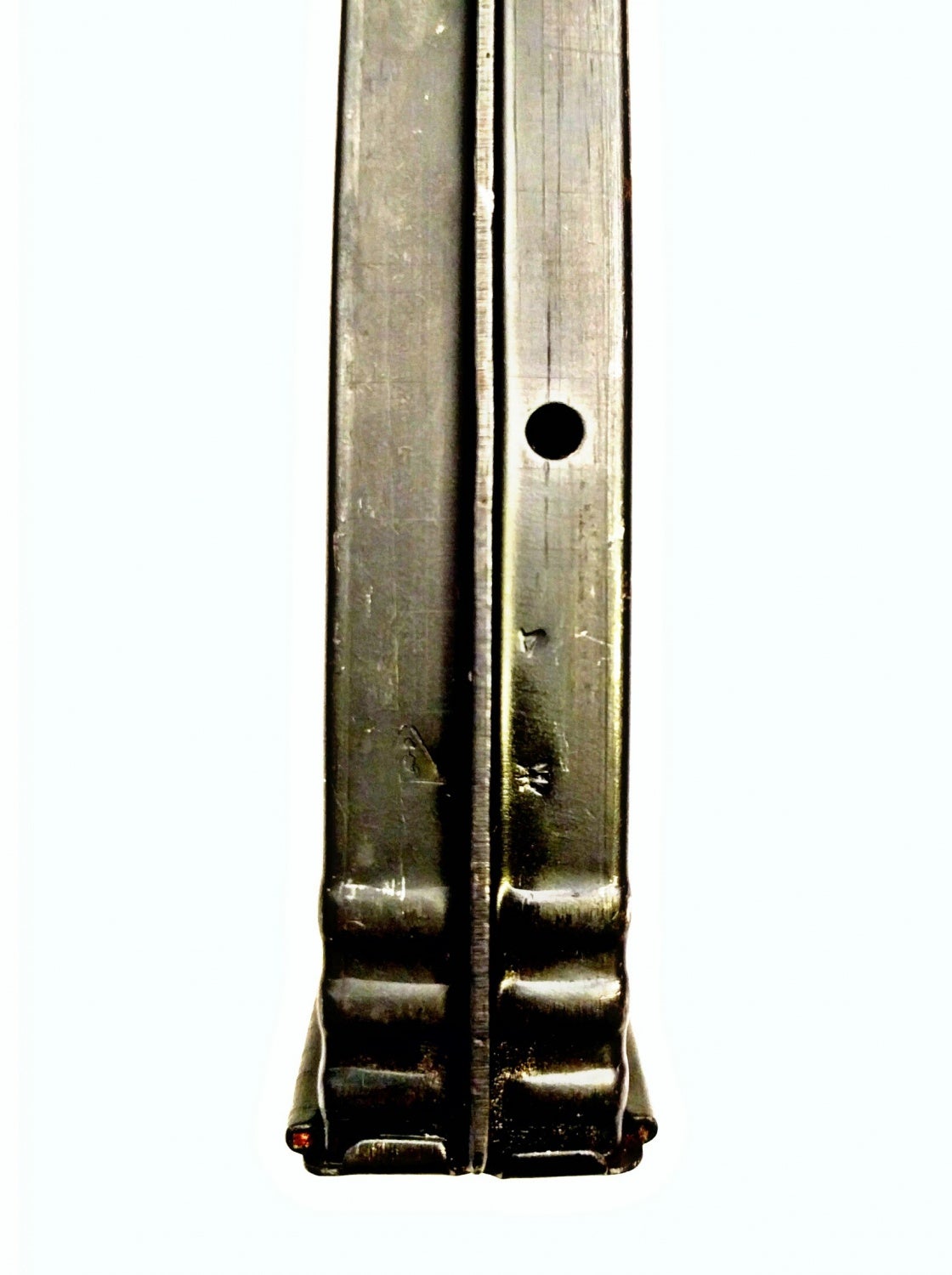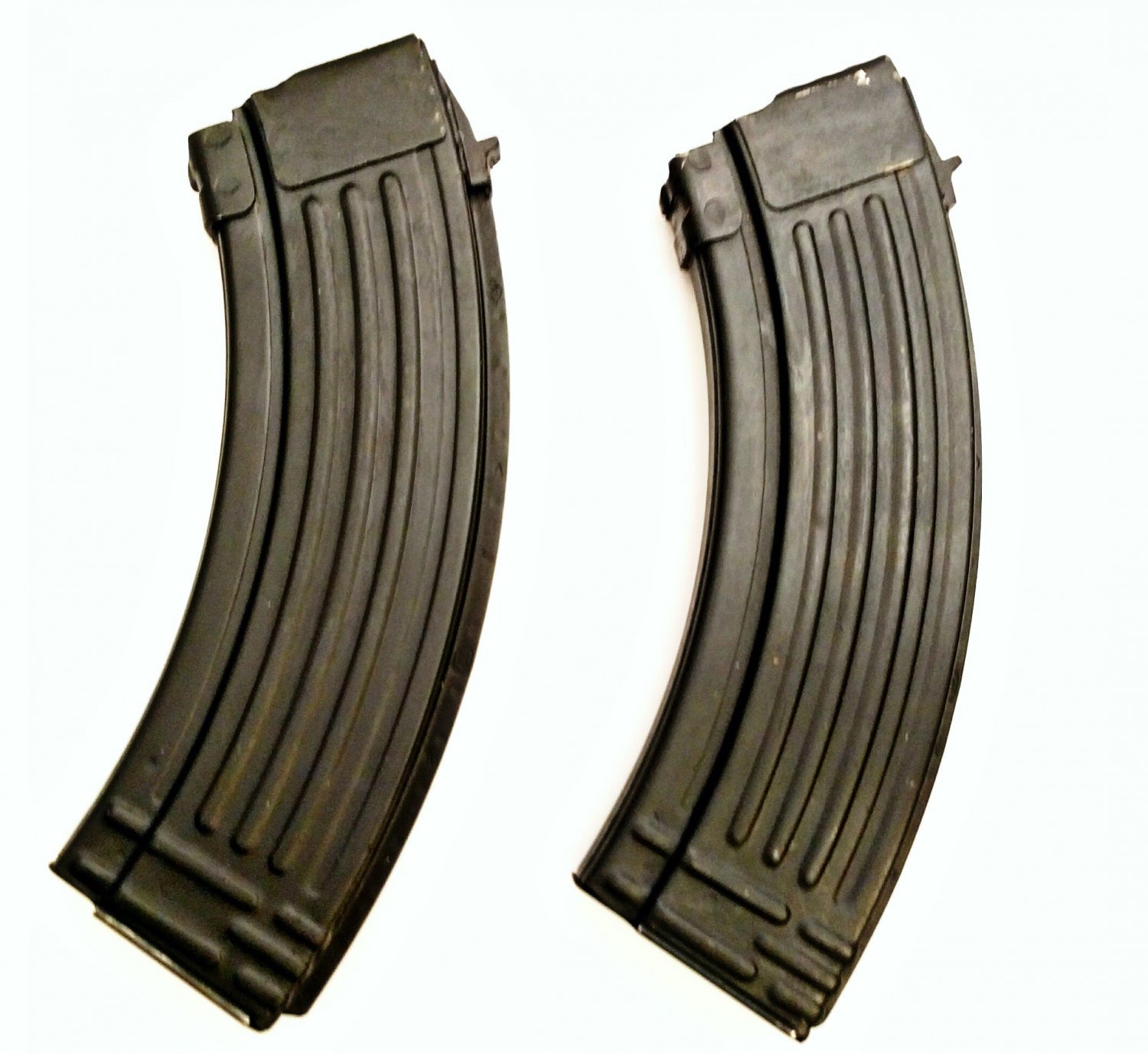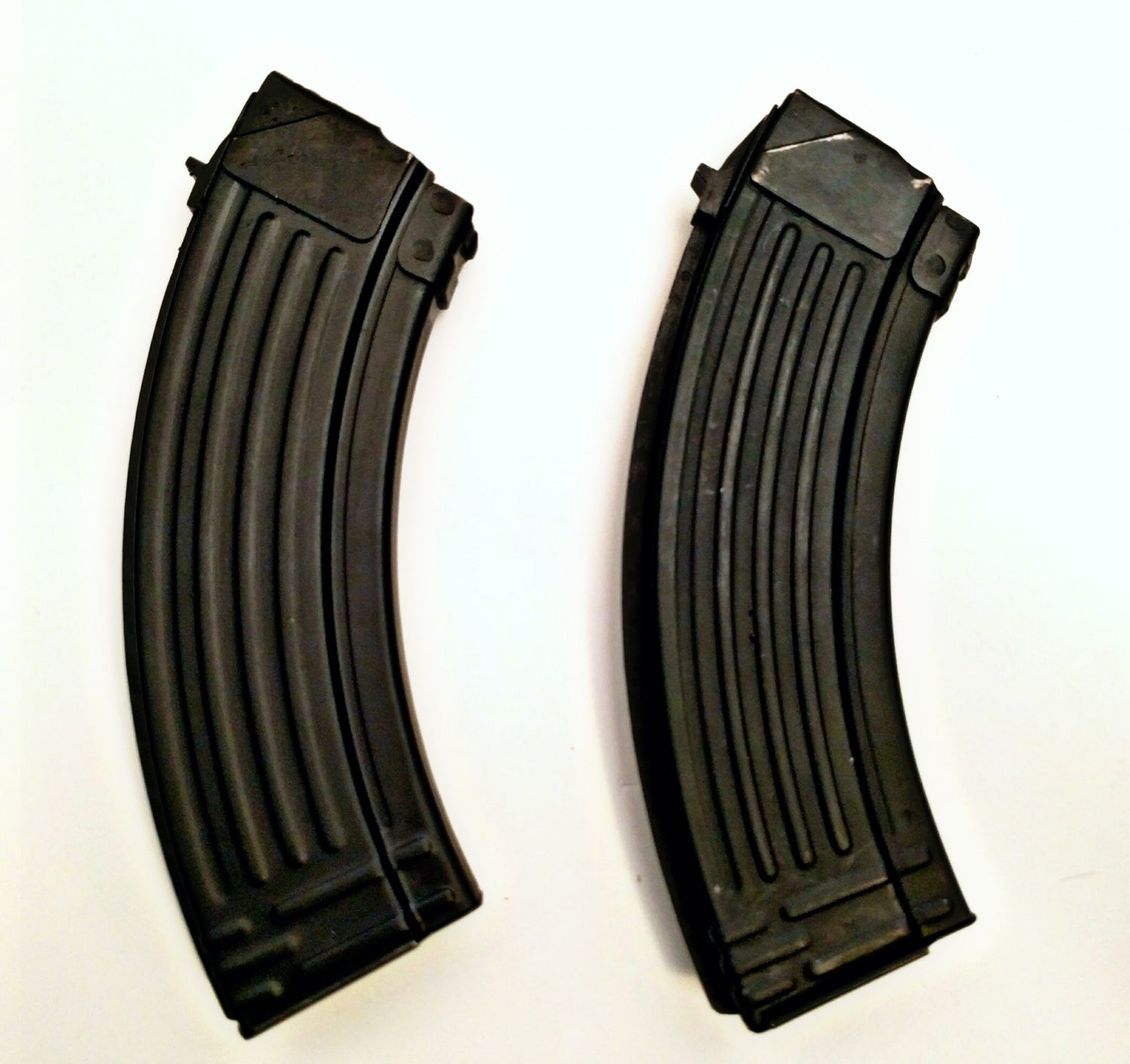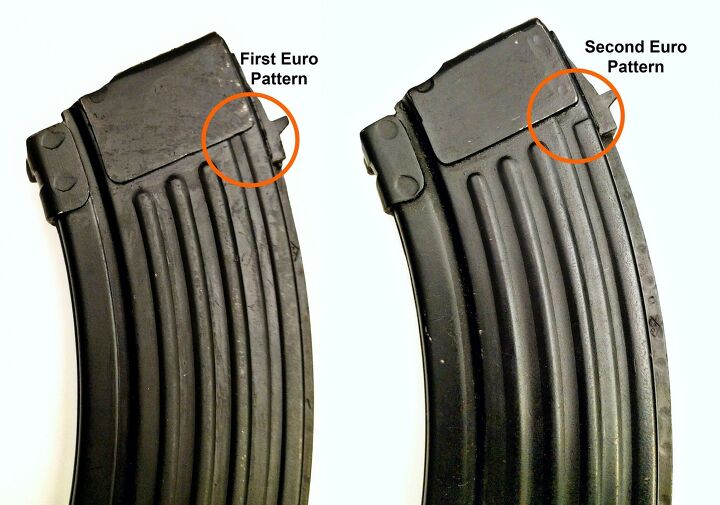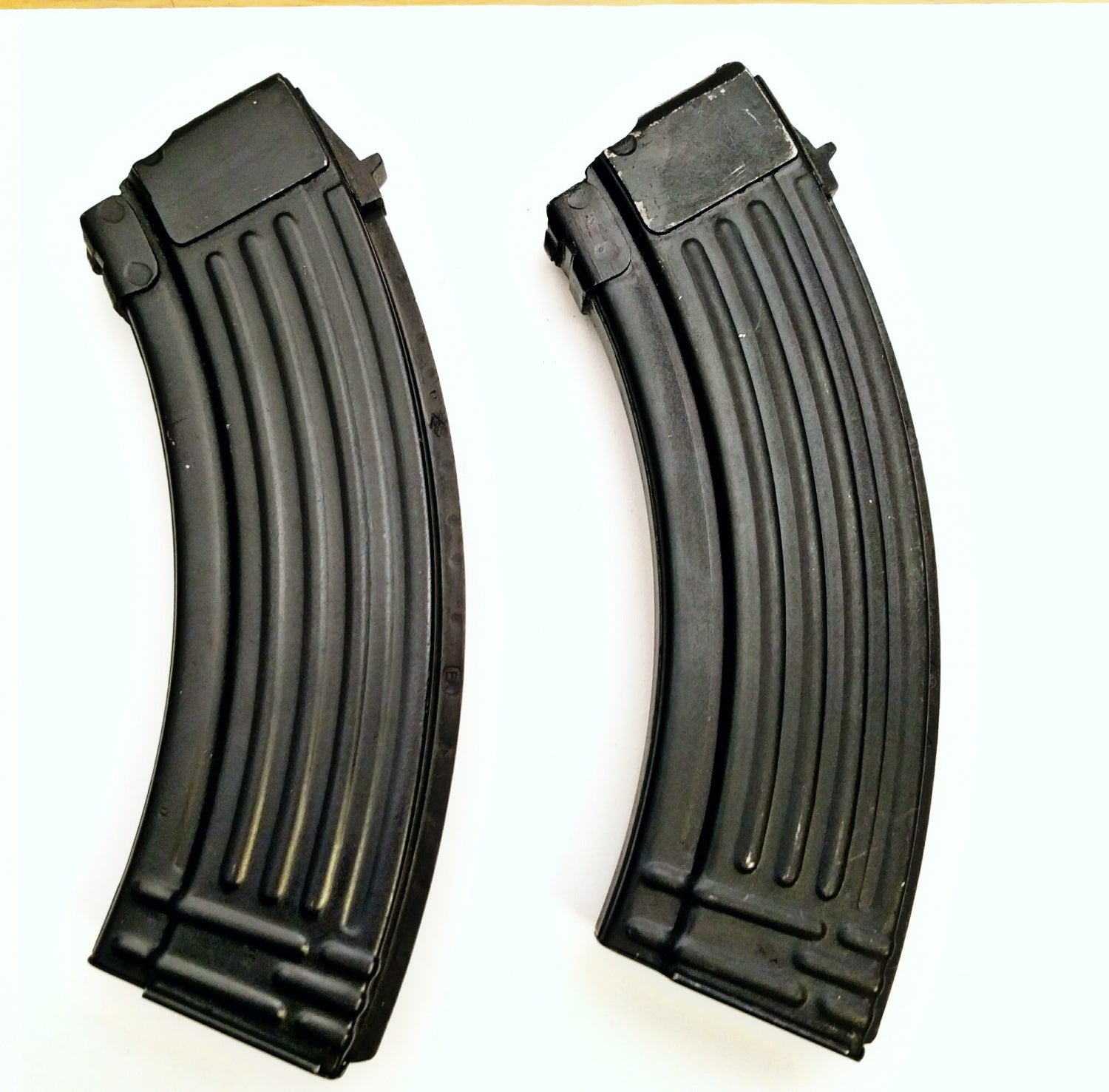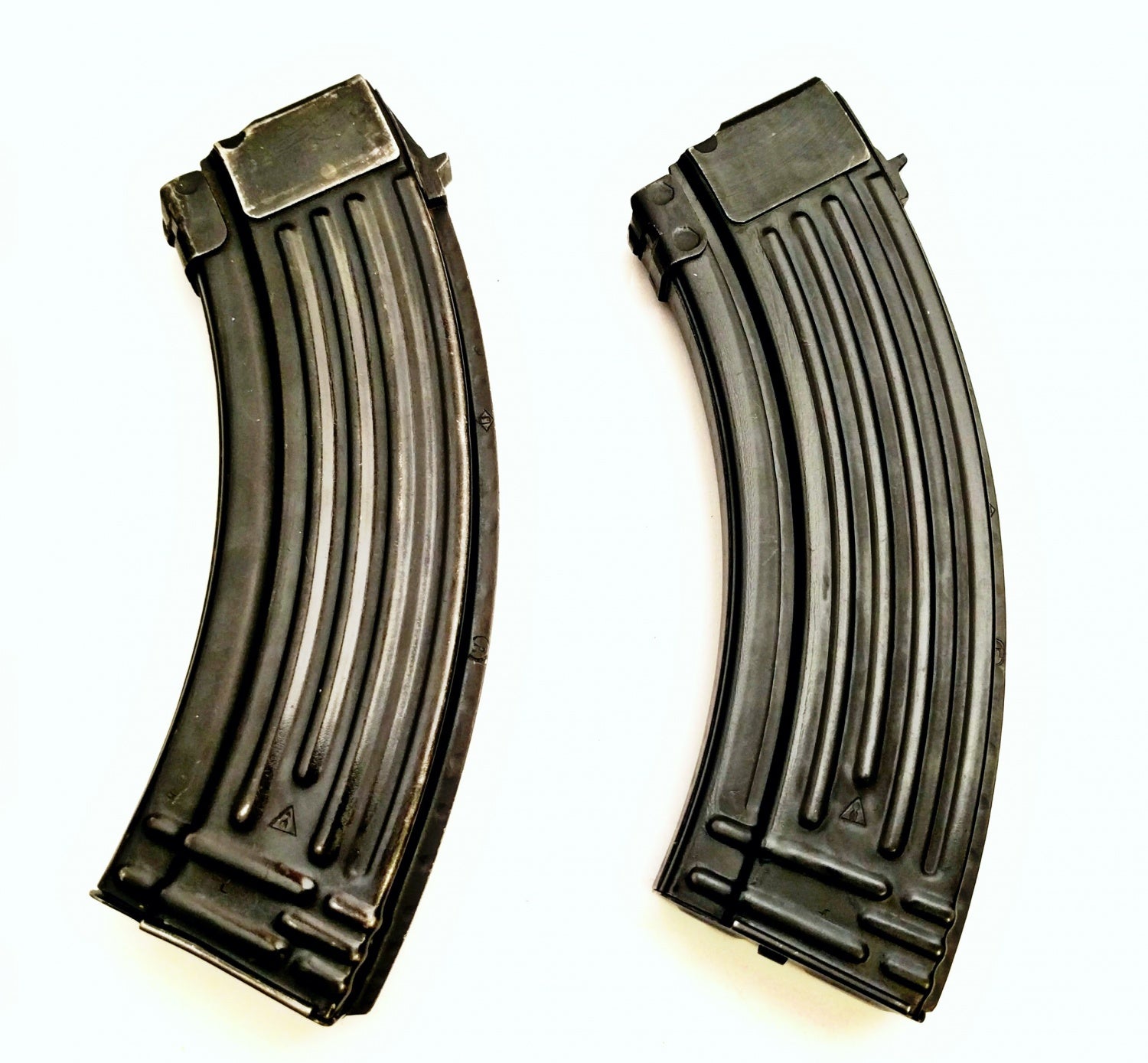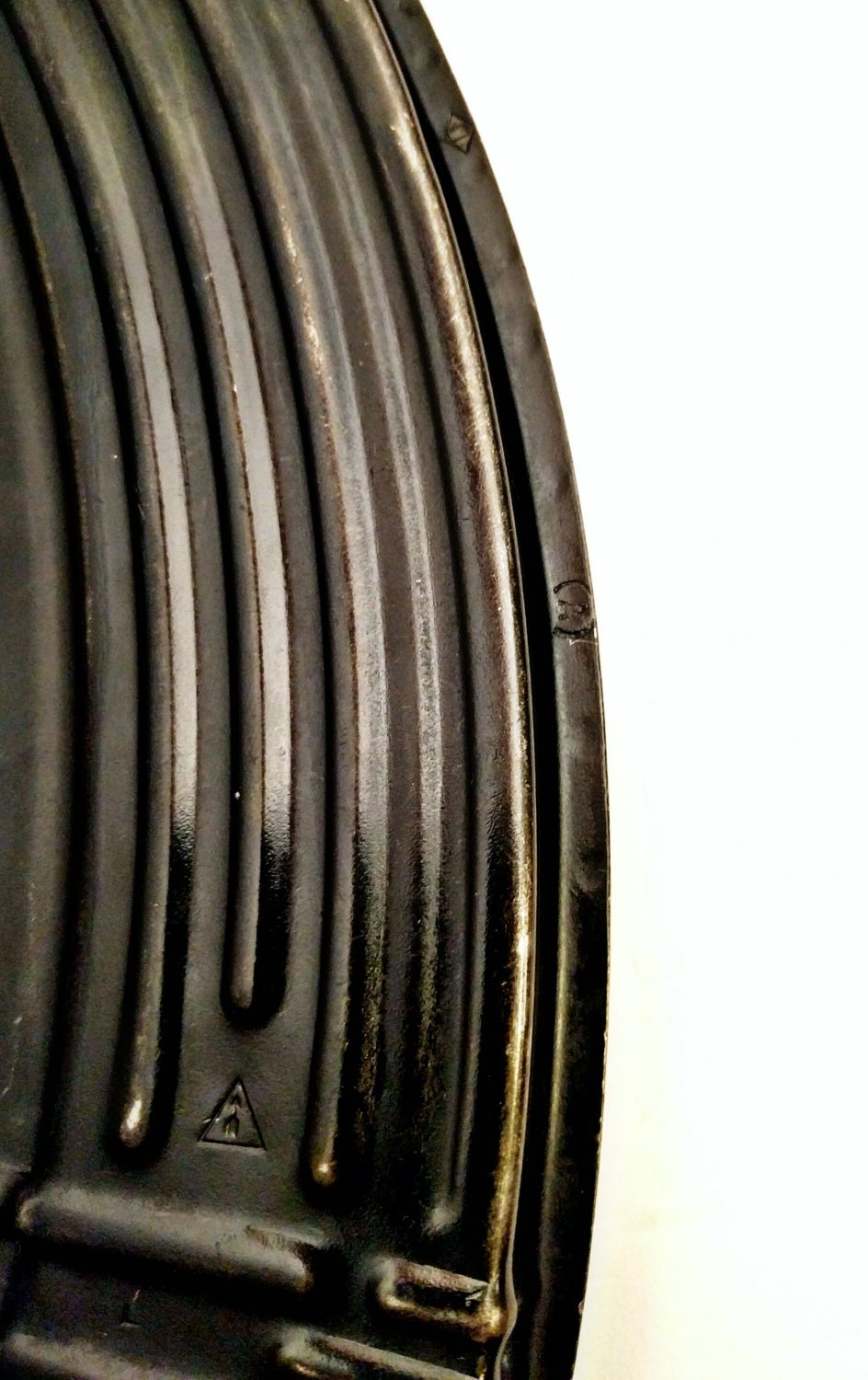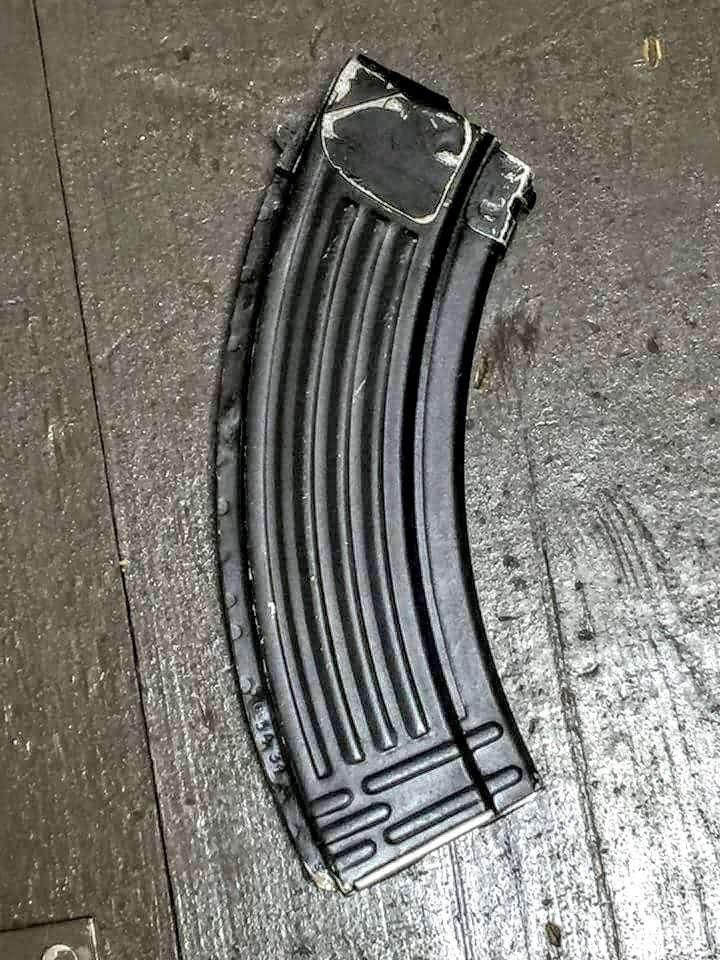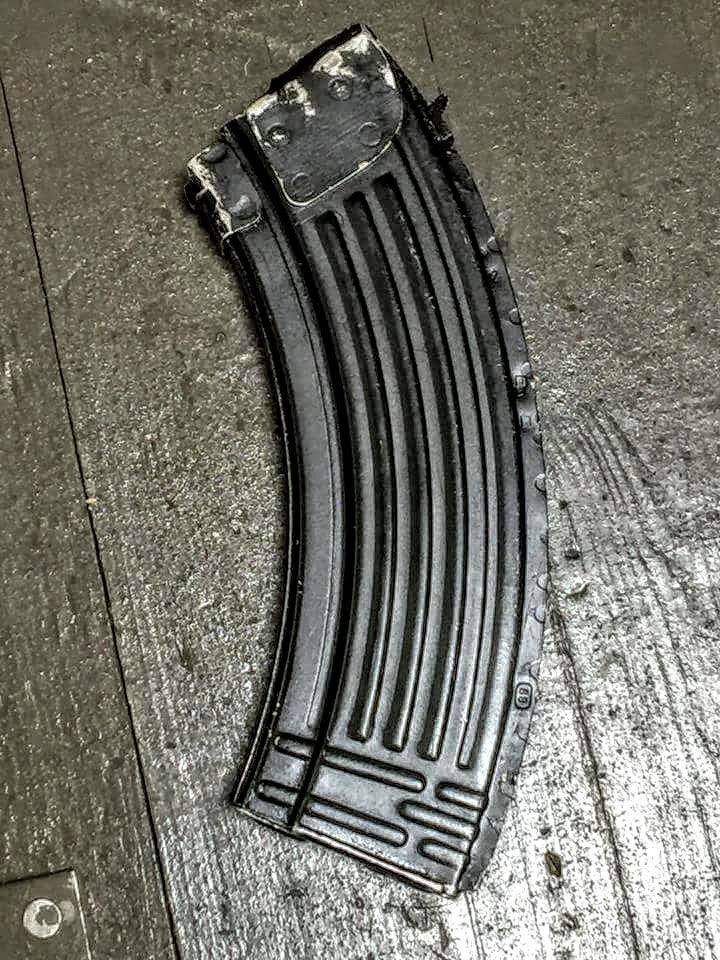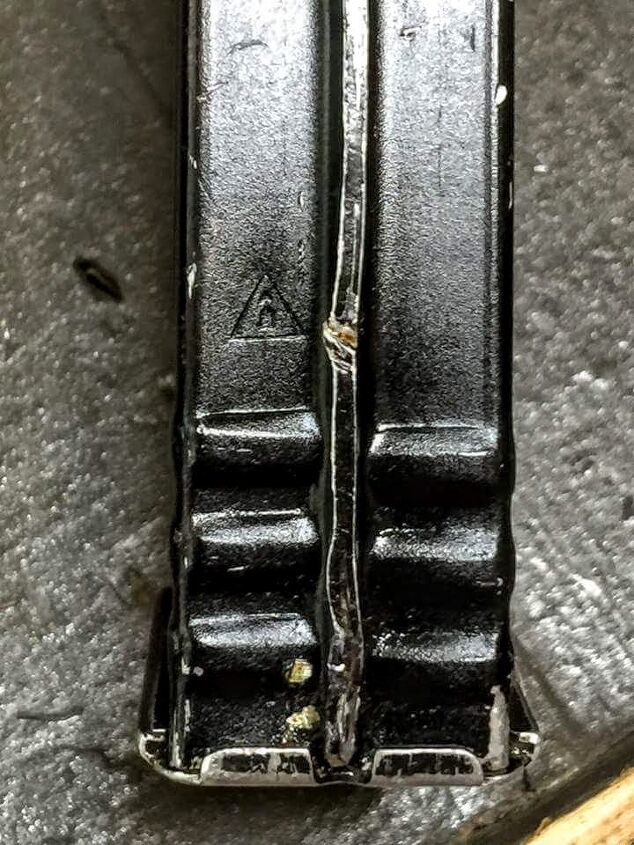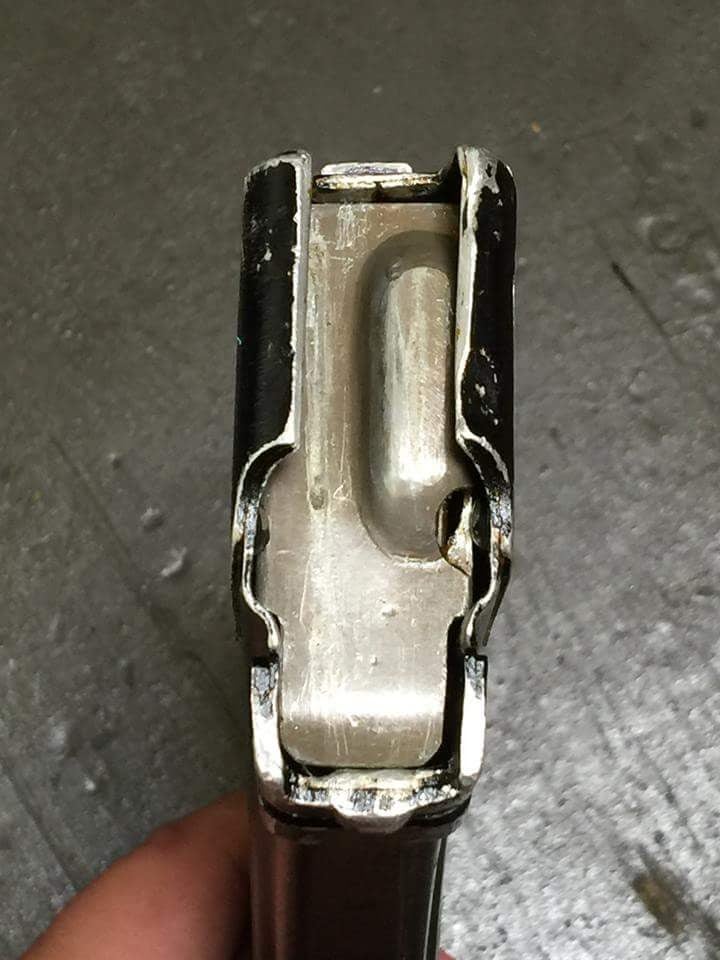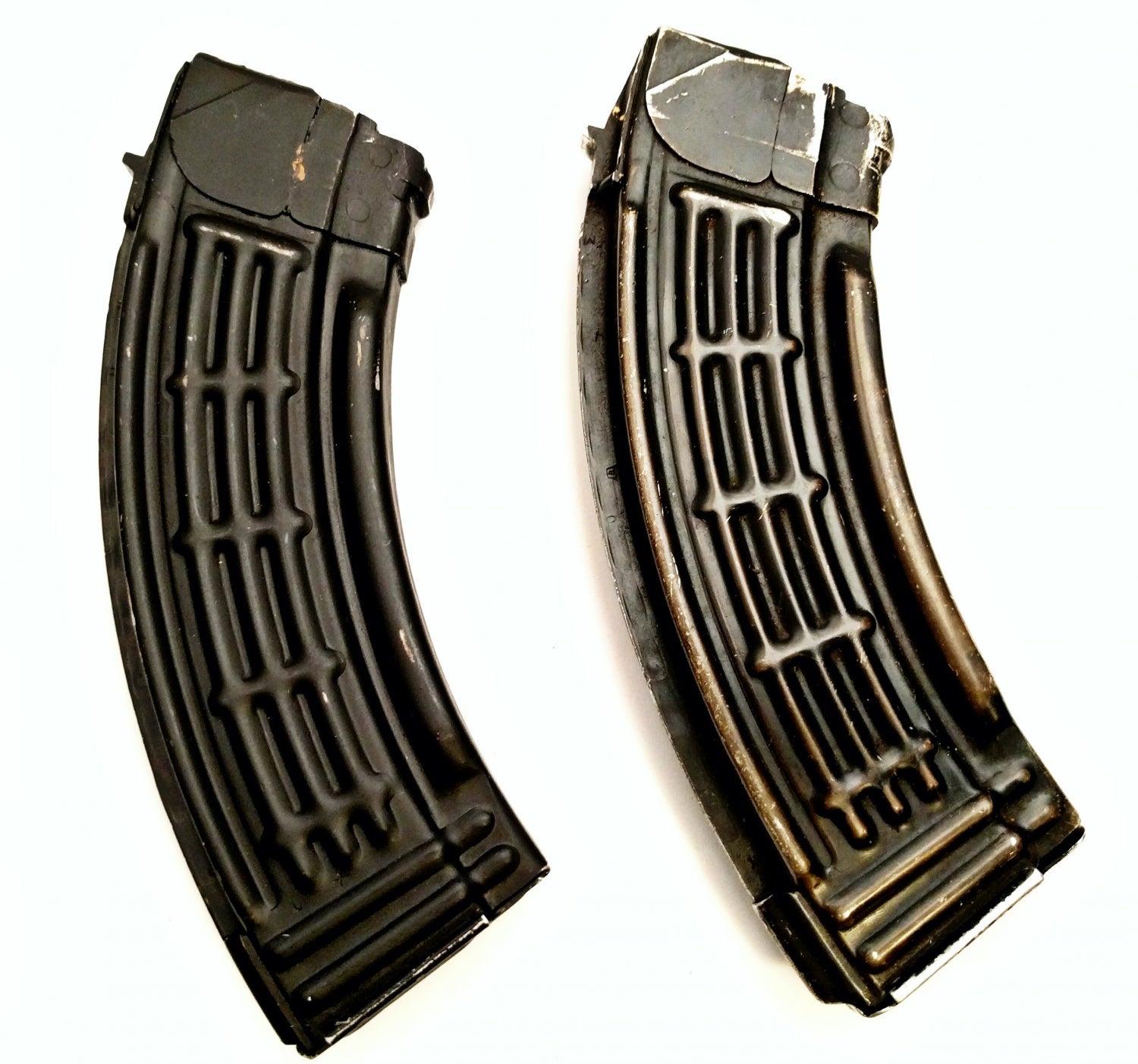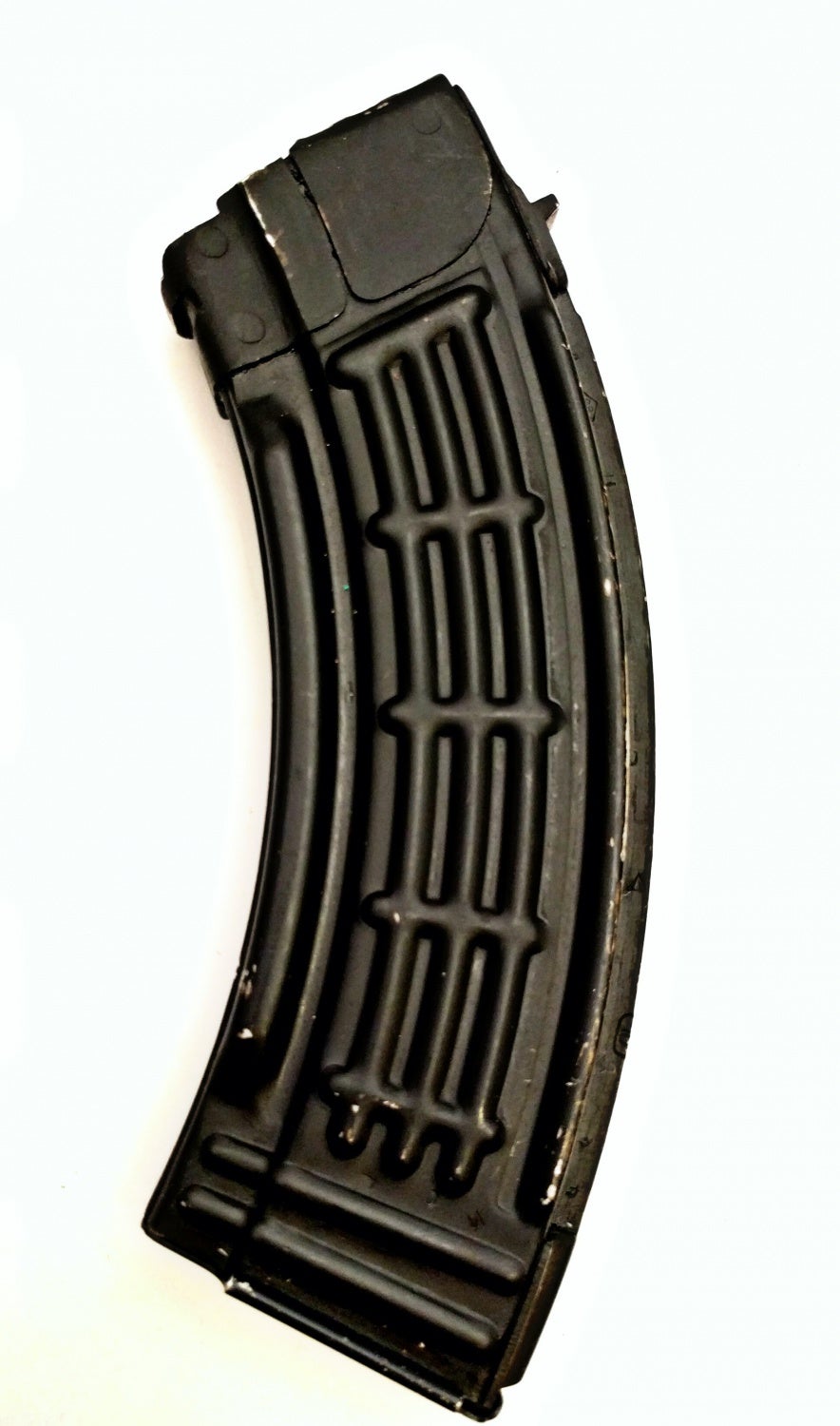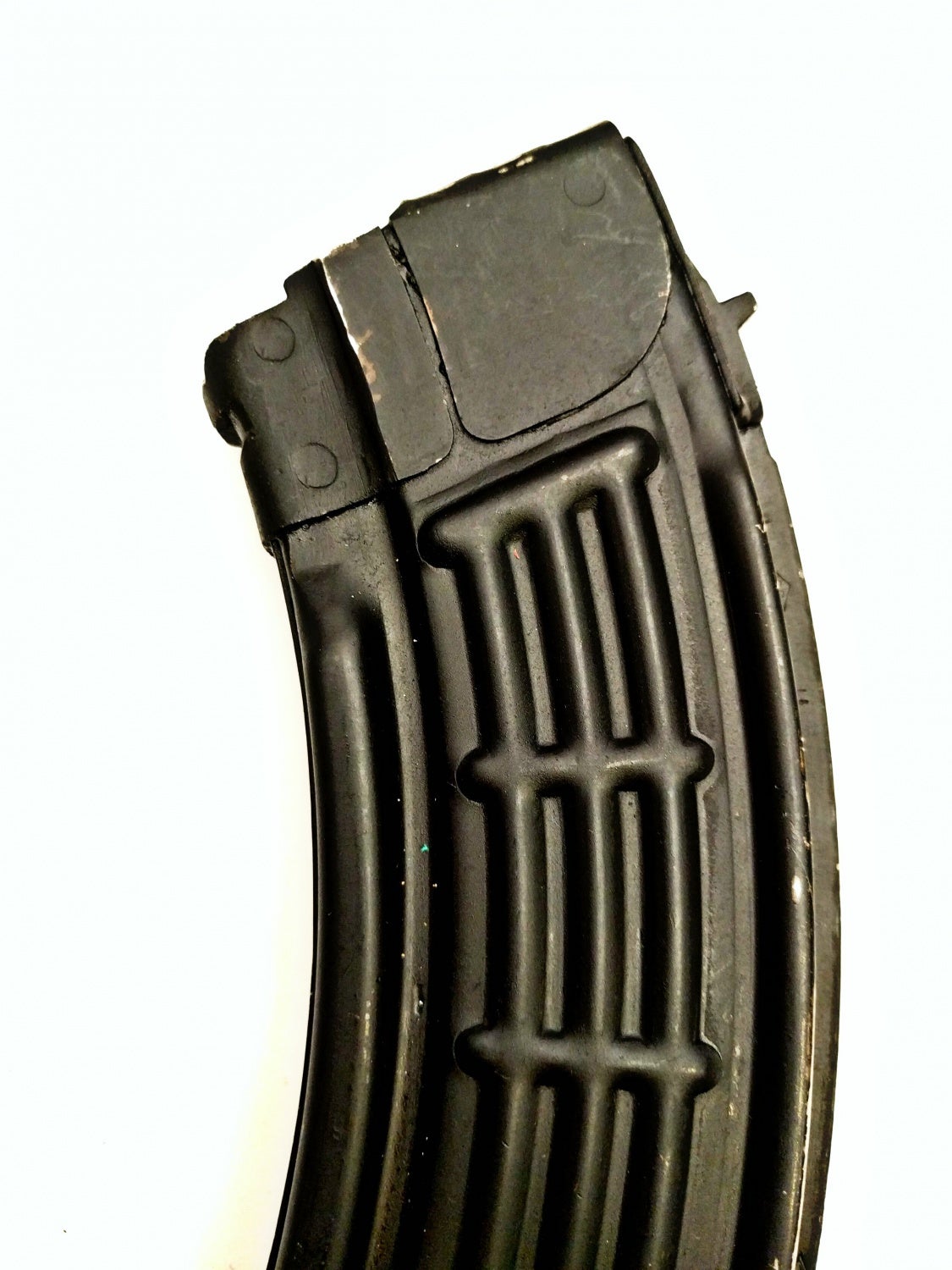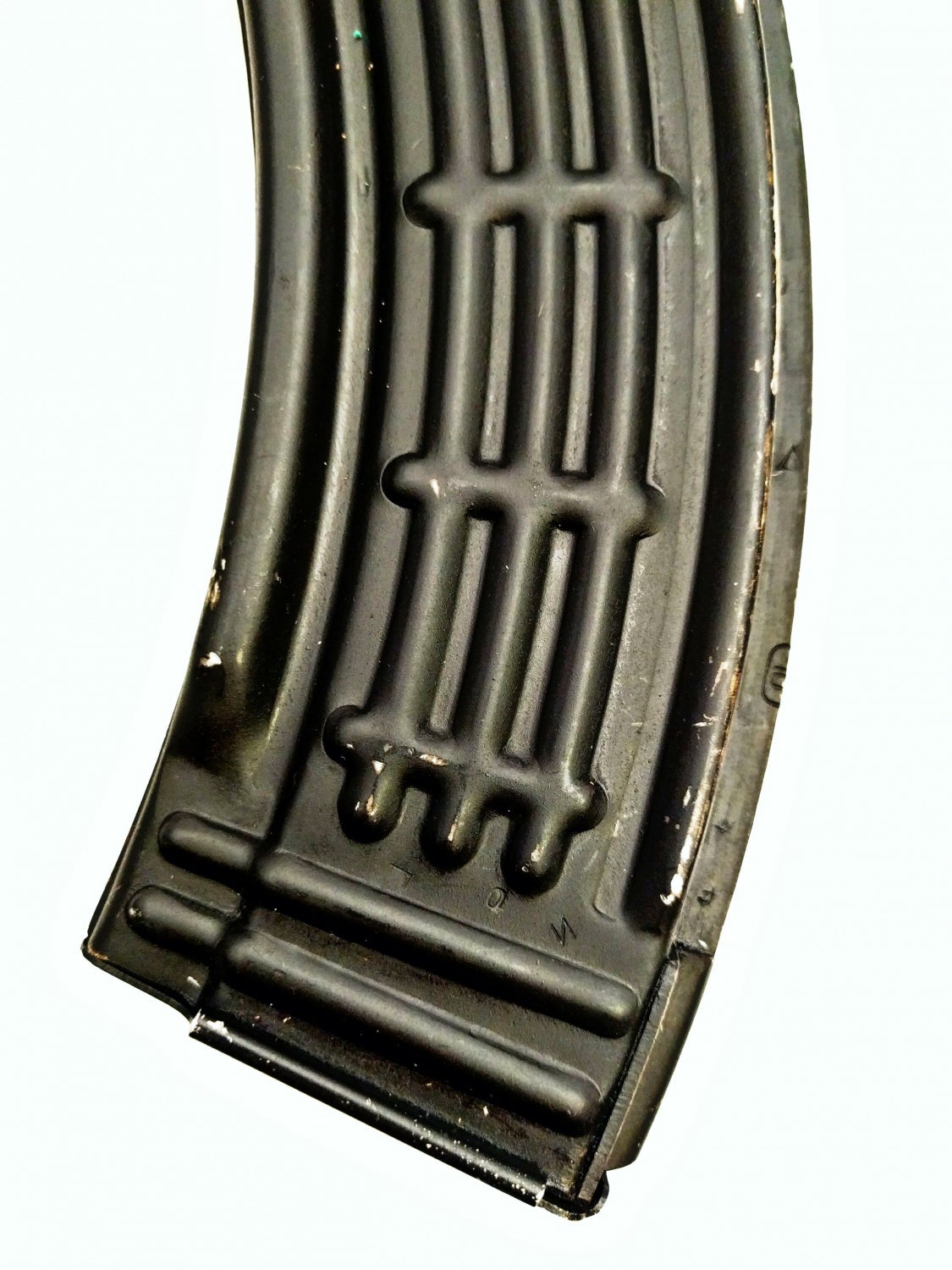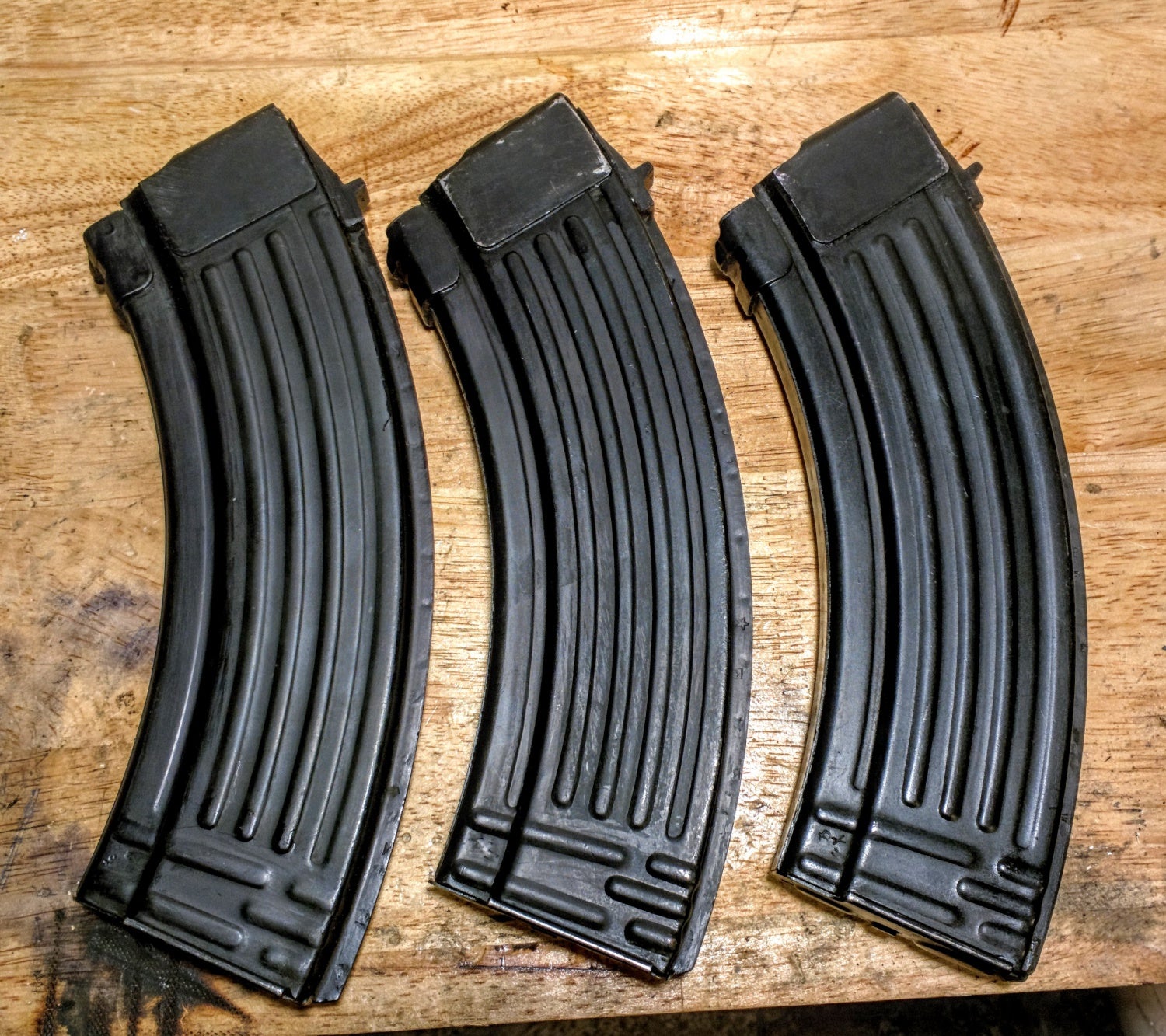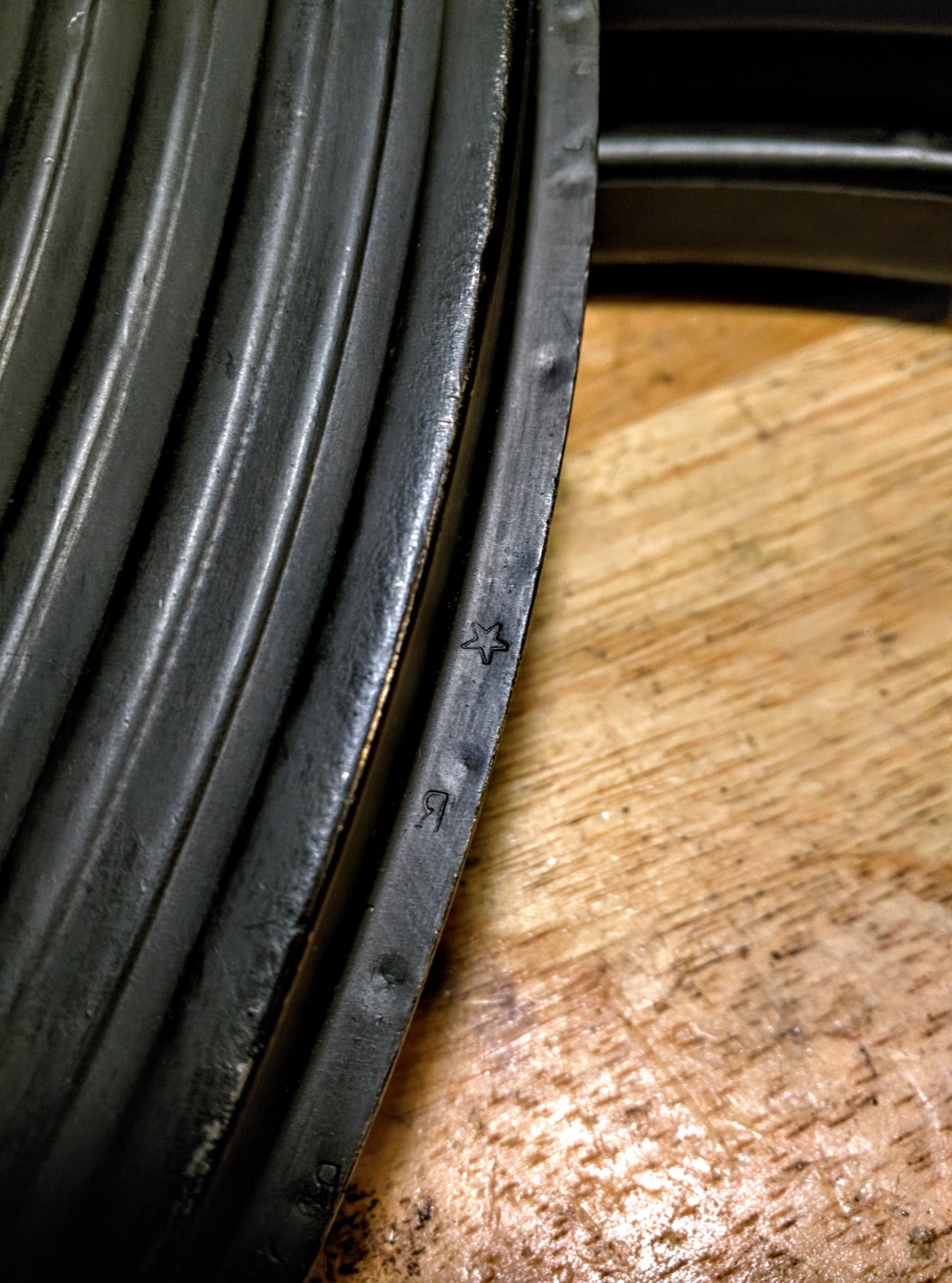This is a guest article from our reader Brandon covering the development of metallic magazines for the AK-47 and AKM rifles. Thanks, Brandon!
The venerable Kalashnikov rifle is easily one of the most important small arms in history. Love it or hate it, it’s one of the most prolific firearms in existence and has quite possibly the most colorful and storied history full of variations and production types from various countries and companies. In my opinion, a huge part of the AK’s success and it’s famed reliability is due to it’s magazines, which have just as much a rich and interesting history as the rifle itself. It would be easy to write a thousand page book on just the magazines, their development, production, and use around the world. I have been collecting and learning about Kalashnikov pattern magazines for several years at this point and have amassed a huge quantity of photos and information I’m pleased to share. This article will just scrape the surface of the wealth of information on the magazines and I’m going to do my best to keep it succinct and just cover Russian pattern, focusing mostly on Izhhevsk/Izhmash produced magazines.
Before I get started, I would like to take a moment to thank and recognize my sources and inspirations for all this. First and foremost, Edward McLean for his article, “IDENTIFYING & COLLECTING THE 7.62×39 AK-47/AKM MAGAZINE”, Rob Stott for his beautiful AK photo books which inspired me to begin doing a lot of my own photography, theakforum.com for all the wonderful and helpful individuals who willingly share so much information, and “AK-47: The Grim Reaper” by Frank Iannamico.
Anatomy
The AK magazine is designed to go above and beyond in durability. They are arguably the most durable magazines ever produced, but the trade-off in that is weight. While Russian design and production is often derided for being poor quality, I feel that understanding the Kalashnikov magazine can give a new perspective into just how well they manufactured some of their small arms and accessories.
This is a list of terminology for the parts which are important when identifying and referring to AK mags. I’ll also add notes with each on why they are important.
1: Front lug
2: Feed lips
3: Feed lip reinforcement or side plates
4: Rear lug
5: Spine
6: Vertical Ribs
7: Horizontal Ribs
8: Follower
9: Spring
10: Keeper
11: Floorplate
The magazine bodies are produced in two halves, stamped from sheets of steel. These are then spot welded together along the front and the spine using massive, industrial spot welders which produce very distinct weld patterns which are often used to identify country of origin. The front and rear lugs are machined, heat treated, and then also spot welded to the body. Again, these welds are very useful in determining origin. Feed lip reinforcement plates are added and spot welded to the body, which add strength and also support while in the gun. The magazine actually contacts six points inside the gun, ideally. These are: The front and rear lug, the feed lips against the lower rails, and the reinforcement plates against the stabilizers.
The follower is stamped and spot welded at its seams and the keeper and floorplate are just basic stampings. The magazines were generally proofed or stamped after production, but that varies on country. Typically, you’ll find an arsenal mark or factory stamp and one or more acceptance or inspection stamps. This varies largely as every country had their own methods, but Russia almost always followed this pattern.
Besides being durable enough to literally be a hammer, bottle opener, and various other tools on the battlefield, the magazines had exceptionally strong springs. They are generally double the length of an AR-15 magazine spring. Both 7.62×39 and 5.45×39 use the same length springs with the same number of coils. It could be argued that the AK necessitated a stronger spring for it’s violent operating system. The followers were also no-tilt from the first design and will continue to feed through some pretty nasty abuse. What is obvious is that the magazine is one of the Kalashnikov’s greatest legacies for a myriad of reasons.
History
With full fledged production of the type 1 AK-47 underway in 1948, the first issue magazine for the Kalashnikov is generally referred to as the slab side due to it’s flat sides. Stamped from 1mm sheet steel, the slab side is a monster of a magazine and very tough. The problem was, they were very heavy, relatively. These began with a blued finish and were later produced with an enameled finish. They feature the Izhevsk arsenal mark on the lower back of the magazine and many inspection proof stamps. Many were serialized to the rifles with which they were issued with electro-pencil and occasionally will have a serial stamped into the magazine.
Around the mid 50’s toward the end of the Type 2 and beginning of the Type 3 AK-47 production, the first, more common, ribbed magazines made their debut. These were stamped from slightly thinner steel and featured the reinforcement ribs on the sides. These feature five vertical ribs, with the outermost two being pressed inward and the middle three press out, and three horizontal ribs at the bottom. The first initial variant of the ribbed magazine is commonly referred to as the back stamp due to it carrying over the slab side’s arsenal mark on the lower back of the mag. These were produced in blued and enameled finishes and also featured plenty of inspection proofs all over.
At some point in the early 60’s the magazines changed slightly again. The majority of proofs were moved to the spine including the Izhevsk arsenal mark. These are correctly referred to as early spine stamps. The proofs seem to get a bit more predictable during this point and will generally feature a diamond with CB at the top left of the spine, an oval with two numbers or two Cyrillic characters in the middle on the left side of the spine, and the Izhevsk proof under that. Various random Cryllic characters were usually stamped toward the bottom.
Later on, another small change was implemented. The rear most inward rib continues it’s impression at a 90 degree angle as it approaches the feed lip reinforcement plates forming an upside-down L. This is what’s considered the second Euro or second pattern ribs. The magazines stayed basically the same otherwise and these are referred to as late spine stamps.
The final variation of steel magazine produced by Izhevsk is called the side stamp. The arsenal mark was moved to the left side of the magazine. The middle vertical rib ends before the other two and the arsenal mark sits there. The proofs on these are generally minimal and they don’t appear to have been used for long as most examples are in very good condition. There are many size variations of the actual Izhevsk stamp on these and the larger versions are much less common and very sought after by collectors.
Now, let’s back track a little. During the early sixties, Izhevsk began experimenting with aluminum magazines to help further reduce weight. They actually produced at least two different variations of aluminum magazines featuring completely aluminum construction aside from the spring. The first variation looked almost identical to the backstamp aside from having feed lip reinforcement plates that curved at the rear instead of being square. These seem to have been produced right along side the steel back stamp magazines for an unknown amount of time.
The following images are courtesy of Jason G:
The second is the much beloved aluminum waffle. The aluminum waffles were supposedly produced from 1961-1963. They are very lightweight and feature a waffle reinforcement pattern on the sides from which they derived their common name. They are also frequently called paratrooper mags. These are some of my favorite mags because they are just a peculiar piece of Kalashnikov history. They feature a large reinforcement area at the front and many, many proofs. These had the arsenal mark on the spine as well which should put their production around the same time as the early spine stamps. In the end, they were deemed too fragile and unfit for issue, so their production life was short.
All the while Izhevsk is chugging along, it’s sister factory, Tula, begins production right along side. Tula is a smaller factory and most things Kalashnikov coming from there have their own charming characteristics. In some ways the production was a little more crude, but it featured more craftsmanship and uniqueness because of this. Tula cranked up production of the AKM around 1960 or so and began with their own version of the spine stamp and produced both early and late versions. They feature a small star which is the arsenal mark for Tula, not to be confused with the star in circle of North Korea. They produced both early and late spine stamps all with enamel finish. Tula continually mirrored Izhevsk production of magazines throughout most of the time the factory made Kalashnikovs.
That’s it for part 1, stay tuned for part 2 where we take a look at synthetic magazines for the AK!
 Your Privacy Choices
Your Privacy Choices
